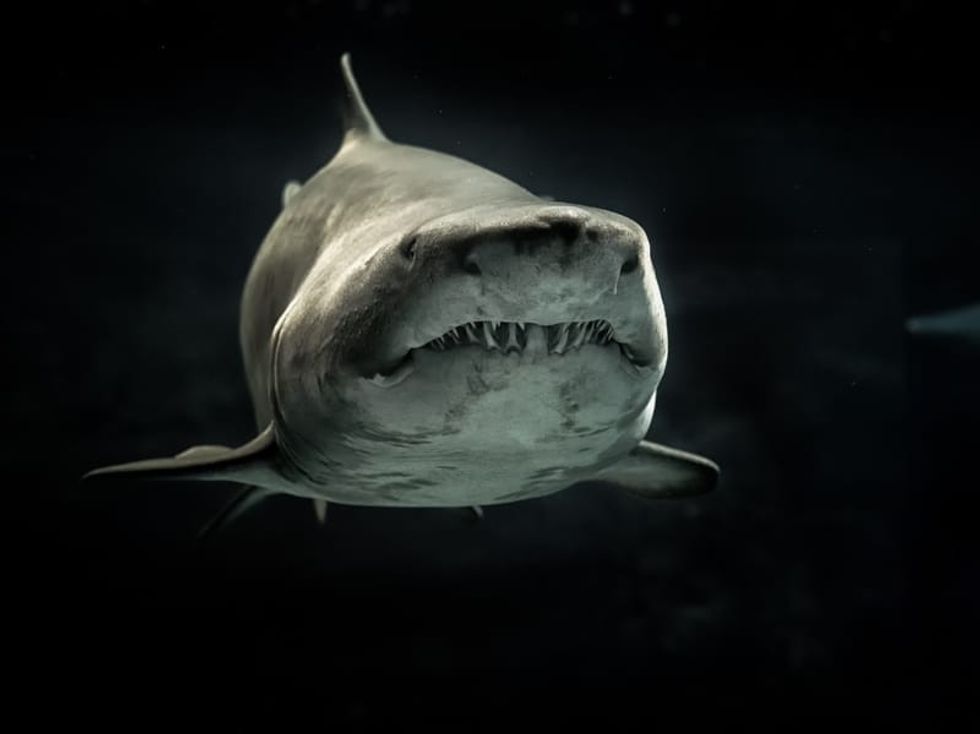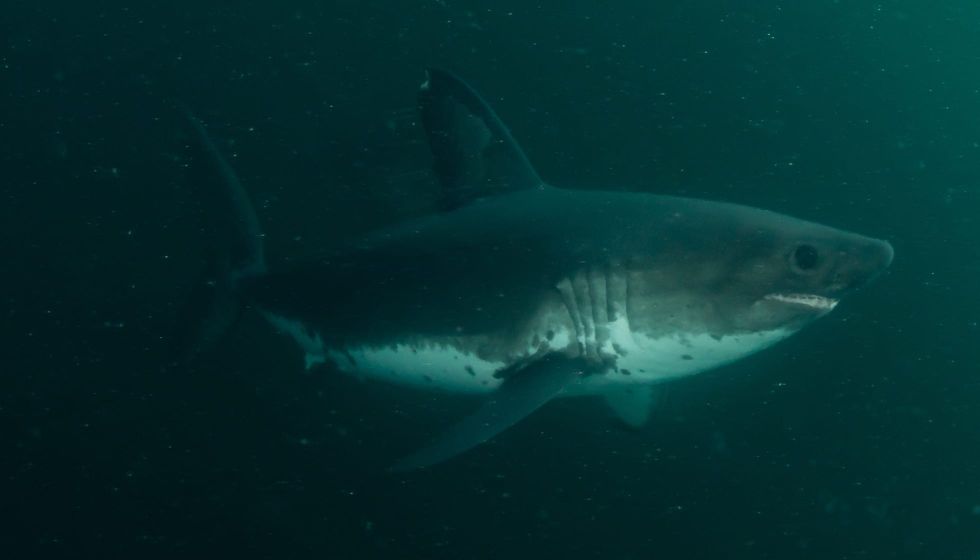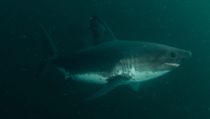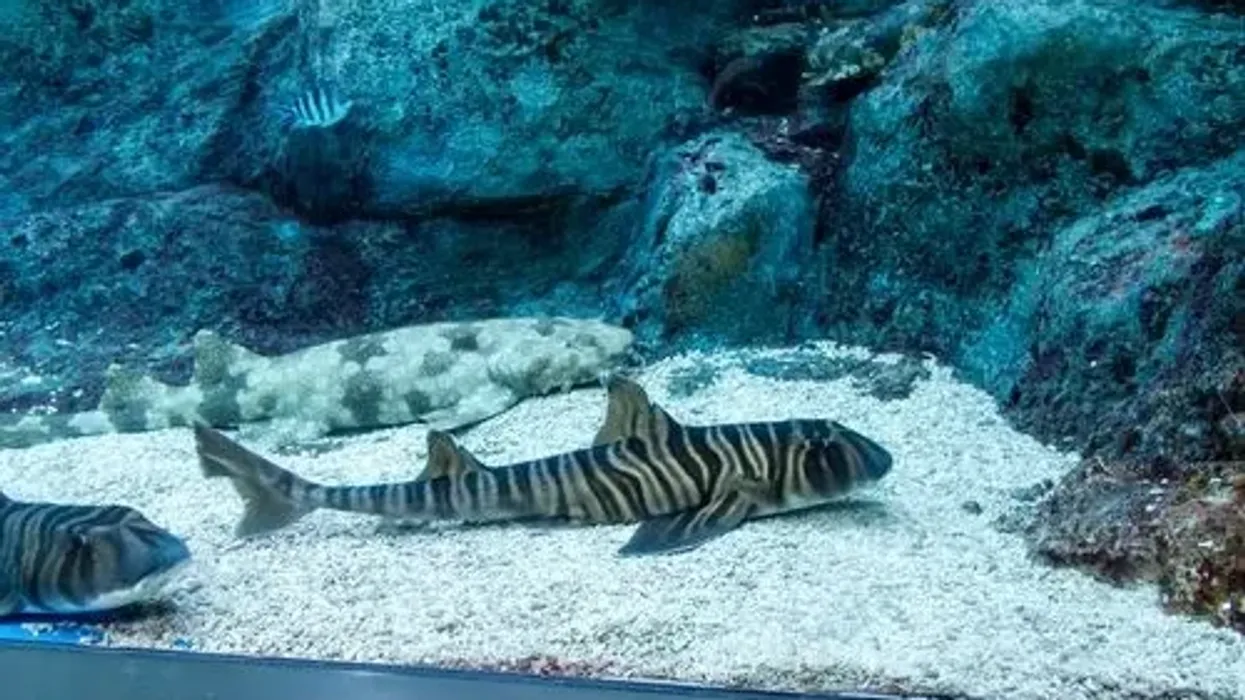Fun Salmon Shark Facts For Kids

The salmon shark, Lamna ditropis, is a type of mackerel shark that lives in the North Pacific Ocean. It is found both close to shore and in the open ocean. This shark has a fairly wide range of distribution. It is found as far north as the Gulf of Alaska and as far south as Japan.
The salmon shark is named after its favorite prey, the Pacific salmon. It is a ferocious hunter that hunts in groups or alone.
It looks incredibly similar to the great white shark. However, the shark that it shares the closest visual similarity to is the porbeagle shark. But unlike the salmon shark, porbeagle sharks prefer warmer waters, and so live in the North Atlantic.
The reason the salmon shark is able to live in the cold waters of the North Pacific is because of its capacity to regulate its temperature. They are able to keep their inner temperature warmer than the water around them.
This is what allows them to live in the prey-rich, but cold waters of the North Pacific. The ability to regulate their internal temperature also means that the salmon shark can swim faster than most other fish.
You may also check out sandbar shark facts and cookiecutter shark facts from Kidadl.
Salmon Shark Interesting Facts
What type of animal is a salmon shark?
The salmon shark, Lamna ditropis, is a type of shark known as mackerel sharks, which are fish of prey.
What class of animal does a salmon shark belong to?
A type of fish, the salmon shark belongs to the class Chondrichthyes. This means that it is a fish whose skeleton is made up of mostly cartilage, similar to fishes like salmon.
How many salmon sharks are there in the world?
There are a lot of salmon sharks Lamna ditropis in the world, with no real threat to their numbers. They are not really caught by commercial fishers, and their conservation status is Least Concern. So, there is no information about the total number of salmon sharks in the world. But their numbers are stable.
Where does a salmon shark live?
The salmon shark, Lamna ditropis, lives in the coastal and oceanic waters of the eastern and western North Pacific Ocean.
What is a salmon shark's habitat?
The habitat of the salmon shark covers a fairly wide range of the eastern and western North Pacific Ocean. They are found from Alaska to California, USA, Baja California, Mexico, North Korea, South Korea, The Sea of Okhotsk, Bering Sea, and all the way to the Sea of Japan. They are found in both coastal and oceanic waters.
They are fast swimmers and can regulate their temperature, so they are able to move quickly and easily for food. They follow the Pacific salmon during the annual salmon run to swim upstream but remain in the ocean.
They are found are depths as far down as 2912 ft (887 m), but typically stay at around 1350 ft (411 m) or above. They tend to stay in the parts of the ocean where light reaches, where they have easy access to food.
There seems to be an interesting difference in the distribution of male and female fish in the eastern North Pacific and western North Pacific. For unknown reasons, there are more females in the eastern North Pacific and more males in the western North Pacific.
It is speculated that this disparity is because of active hunting for males in the eastern Pacific rather than the western Pacific, but this cannot be proved.
Who do salmon sharks live with?
Salmon sharks, Lamna ditropis, may swim alone or in schools. When it comes to hunting, they hunt in groups of 30-40 individuals, attacking the schools of salmon or other kinds of herring fish.
How long does a salmon shark live?
Sharks are fairly long-lived fish. A female salmon shark may live for about 20 years. Males live longer, up until 27 years old in some cases.
How do they reproduce?
The method of reproduction that the salmon shark uses is called ovoviviparity.
This means that after the males mature, they find females to mate with. After mating, the females lay eggs internally.
The eggs hatch inside the females, and the pups feed on the other unfertilized eggs or even other pups till they are ready to emerge. Then the females migrate south to areas off the Oregon coast, and California and Baja California, to give birth to the baby sharks that survive.
The gestation period, which means the amount of time the babies stay inside their mother, is nine months, like humans.
Female salmon sharks can give birth once every two years. The females mature at 8 to 10 years, which is later than the males. The males mature at five years. The mating season is anytime between summer to autumn.
What is their conservation status?
There are no real threats to adult salmon sharks. These sharks aren’t an important catch for commercial or even private fisheries. If they are caught, sometimes the flesh is consumed, but mostly their fins are taken.
The salmon shark is also able to move quickly and survive in a number of habitats because of its ability to regulate its internal temperature. Because of this, and the stability of the salmon shark populations, the IUCN has classified the salmon shark’s conservation status as of Least Concern.
Salmon Shark Fun Facts
What do salmon sharks look like?

Salmon sharks are bluish-gray to bluish-black on the top, including their dorsal fin, with a white belly. The juveniles may have dark blotches on their bellies, but by the time they grow up, these blotches disappear. Their bodies are short and heavy, and they have tails in the shape of a crescent.
They have wide tails with two horizontal keels. These are short bumps on the lower part of the tail, right above the tailfin. This is an unusual feature in sharks. The only other shark with a double keel is the porbeagle shark.
They have short, conical-shaped snouts. They also have gill slits that are large when compared to their bodies.
Salmon sharks, Lamna ditropis, look exactly like the porbeagle sharks, even though both live in very different habitats. Despite this, salmon sharks are commonly mistaken for the great white shark, because of the similarities in their appearance and the distinctive dorsal fin.
How cute are they?
Salmon sharks are vicious predators with sharp teeth and scales. There are certainly very powerful creatures, but they cannot be called cute at all!
How do they communicate?
Salmon sharks have several ways of communicating with each other, primarily for hunting and reproduction. They have pores in their snouts that lets them sense the electromagnetic signals in other fish and in each other.
This shark uses body language and sense of smell to detect prey or communicate with each other.
How big is a salmon shark?
The species salmon shark ranges between 5.8–10 ft (1.7-3 m) in length. Salmon shark is half the size of the great white shark on average. Female sharks tend to be larger than male sharks in length in both species.
How fast can a salmon shark swim?
Because of their ability to maintain their internal body temperature, known as thermoregulation, salmon sharks can swim pretty fast. They are capable of reaching speeds of 50 mph (80.4 kph).
How much does a salmon shark weigh?
The salmon shark size is known to range between 485-992 lb (219-449 kg).
What are the male and female names of the species?
Male and female sharks are not known by any particular names.
Male salmon sharks are simply called males, and female salmon sharks are called females.
What would you call a baby salmon shark?
All baby sharks, including the babies of the salmon shark (Lamna ditropis), are known as pups.
What do they eat?
Salmon sharks are opportunistic feeders. This means that they will eat just about anything that they can catch. Because the salmon sharks are fast and can tolerate a wide range of temperatures in the water, they can move around for their prey.
They are named after their favorite prey, the Pacific salmon. But apart from the salmon, these sharks will also eat other kinds of herring fish, squid, steelhead trout, sardines, codfish, lanternfishes, pomfrets, mackerel, and many others.
They may even migrate for food, following the migration patterns of their preferred prey. This shark's salmon-eating instincts are so strong that it will follow the salmon as it swims through the ocean to reach the rivers, from Baja California to the Gulf of Alaska.
Are they dangerous?
Salmon sharks are apex predators of the ocean. This means that they have no known natural predators. They are not picky eaters, swim fast, and can survive in a wide range of water temperatures and depths. This makes them extremely dangerous.
Would they make a good pet?
A salmon shark would make a terrible pet for many reasons, including the fact that it is a wild animal that needs its habitat and food sources. The shark salmon needs are great, as are its needs for other fish.
It is a voracious predator that is very dangerous. It has sharp teeth, and even its scales are very sharp.
The salmon shark is also not a small fish. It is a shark, reaching a minimum of 5.8 feet in length, and needs a lot of ocean space to be able to live comfortably. The salmon shark should not be kept as a pet at all.
Did you know...
In Miyagi, a city in Japan, the heart of the salmon shark is considered a delicacy for sashimi dishes.
In the 2000s, there was a decline in the numbers of king salmon fish. This decline is speculated to be because of the salmon shark. It is assumed that the salmon shark was feeding on the majority of the fish that were trying to swim upstream to spawn.
A fun salmon shark fact for kids is that in 1998, salmon sharks are known to have eaten a quarter of the salmon run in the Gulf of Alaska.
The sport fishery of the salmon shark has been regulated in Alaska since 1997. This is to ensure that the species remains under the conservation status of Least Concern. One person is only allowed to fish salmon sharks twice a year in Alaska to ensure the sport fishery does not harm the populations of this shark species.
Salmon sharks and humans
Salmon sharks are vicious predators when it comes to fish. However, they seem to be more docile in comparison with great white sharks, with hardly any reports of a salmon shark attack.
There aren’t a lot of records of encounters of humans with salmon sharks, except in fishing nets set out for salmon. There is a small fishery for salmon sharks in the Northwest Pacific, but it doesn’t catch more than 5000 sharks a year.
In Japan, their first dorsal fins are sometimes used in soup. In one location, their hearts are used in sashimi. The flesh of the salmon sharks is sometimes eaten as well.
When caught in fisheries, the salmon sharks are often discarded. If they are kept, it is primarily for their first dorsal fin.
Divers who have encountered this species have not reported any salmon shark attacks.
Nevertheless, they could be dangerous if they feel like you are a threat to them. So it is important to leave these and other sharks alone.
Comparisons with other fish
Salmon sharks are mackerel sharks, which is the common name for the family of sharks called Lamnidae. This family of sharks also includes the great white sharks and the goblin sharks.
The salmon sharks look very similar to the great whites and are frequently mistaken for them. However, the salmon sharks are half the size of the great whites and have darker blotches along the side.
They are most similar to the porbeagle sharks, but the salmon sharks live along the eastern North Pacific and western North Pacific Ocean. The porbeagle sharks prefer warmer temperatures and so they live in a wider area, including the North Atlantic Ocean.
The capacity of salmon sharks to regulate their body temperatures is very unusual among fish but not among sharks. This ability is what allows them to hunt down their prey.
Here at Kidadl, we have carefully created lots of interesting family-friendly animal facts for everyone to discover! For more relatable content, check out these nurse shark facts and basking shark facts for kids.
You can even occupy yourself at home by coloring in one of our free printable salmon shark coloring pages.
We Want Your Photos!
More for You
See All
Bachelor of Arts and Law specializing in Political Science and Intellectual Property Rights

Anusuya MukherjeeBachelor of Arts and Law specializing in Political Science and Intellectual Property Rights
With a wealth of international experience spanning Europe, Africa, North America, and the Middle East, Anusuya brings a unique perspective to her work as a Content Assistant and Content Updating Coordinator. She holds a law degree from India and has practiced law in India and Kuwait. Anusuya is a fan of rap music and enjoys a good cup of coffee in her free time. Currently, she is working on her novel, "Mr. Ivory Merchant".
Bachelor of Arts specializing in English Literature, Masters of Art specializing in English and Communication Skills

Sonali RawatBachelor of Arts specializing in English Literature, Masters of Art specializing in English and Communication Skills
Sonali has a Bachelor's degree in English literature from Guru Gobind Singh Indraprastha University and is currently pursuing a Master's in English and Communication from Christ University. With considerable experience in writing about lifestyle topics, including travel and health, she has a passion for Japanese culture, especially fashion, and anime, and has written on the subject before. Sonali has event managed a creative-writing festival and coordinated a student magazine at her university. Her favorite authors are Toni Morrison and Anita Desai.
Disclaimer
1) Kidadl is independent and to make our service free to you the reader we are supported by advertising. We hope you love our recommendations for products and services! What we suggest is selected independently by the Kidadl team. If you purchase using the Buy Now button we may earn a small commission. This does not influence our choices. Prices are correct and items are available at the time the article was published but we cannot guarantee that on the time of reading. Please note that Kidadl is a participant in the Amazon Services LLC Associates Program, an affiliate advertising program designed to provide a means for sites to earn advertising fees by advertising and linking to Amazon. We also link to other websites, but are not responsible for their content.
2) At Kidadl, we strive to recommend the very best activities and events. We will always aim to give you accurate information at the date of publication - however, information does change, so it’s important you do your own research, double-check and make the decision that is right for your family. We recognise that not all activities and ideas are appropriate for all children and families or in all circumstances. Our recommended activities are based on age but these are a guide. We recommend that these ideas are used as inspiration, that ideas are undertaken with appropriate adult supervision, and that each adult uses their own discretion and knowledge of their children to consider the safety and suitability. Kidadl cannot accept liability for the execution of these ideas, and parental supervision is advised at all times, as safety is paramount. Anyone using the information provided by Kidadl does so at their own risk and we can not accept liability if things go wrong.
3) Because we are an educational resource, we have quotes and facts about a range of historical and modern figures. We do not endorse the actions of or rhetoric of all the people included in these collections, but we think they are important for growing minds to learn about under the guidance of parents or guardians.







